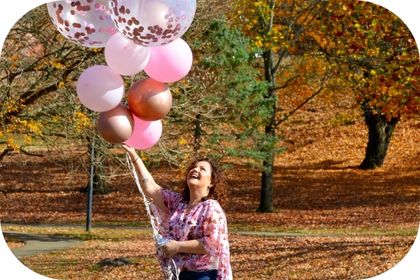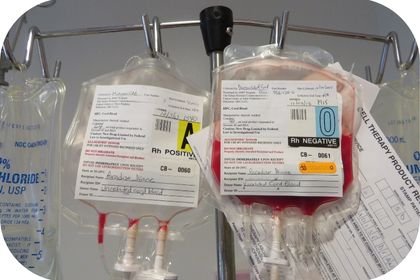
Twenty-nine years ago, at the age of 24, my life took an unexpected turn with a diagnosis of an incurable form of Hodgkin Lymphoma. The doctors forewarned me that it would go into remission but would continue to return. Over time the recurrences would come at shorter intervals, the cancer would become more aggressive, and the chemotherapy would become less effective. The doctors were right. The cancer returned at ages 31, 35, 38-41, and 42. The cancer progressed from a stage 1 without symptoms to a stage 4 with a metastasis to my bone marrow that left me unable to walk, drive or take care of myself at times.
The following years were marked by an arduous battle: over 40 scans, 30 radiation treatments, 15 types of chemotherapy drugs, and more than 70 blood transfusions. More than once, I thought it was my time and was even told as much three different times.
Hope: A Valuable Commodity
At the onset of my medical journey, there was this one doctor who shared some wisdom that really stuck with me. He said, "Hold on to hope, because every day brings new breakthroughs in medicine." Ever since then, I've had this belief that someone, somewhere is working on something that could someday cure me. It became a mantra for me as I continued to live with cancer.
I witnessed this firsthand as the years went on. For example, most chemotherapies are not targeted to a specific type of cancer cell. The chemotherapy eradicated cancer cells, however healthy cells were also impacted as well. Ten years after my first diagnosis, I was offered an immunotherapy drug, which are in the simplest of terms, targeted chemotherapy. They are designed to attach to a specific receptor on the cancer cell. The drug goes in and seeks out that receptor, attaches to it, and then eradicates it. This reduces the side effects for most patients. I didn’t lose my hair or feel as sick following treatment.
As time went on, I went through 3 or 4 immunotherapy drugs sometimes in combination with chemotherapy drugs because the cancer became so aggressive. The final chemotherapy regimen included both and was changed more than once due to the aggressiveness of the cancer. This was when my doctor suggested I go to a larger hospital that had more tools in their toolbox.
The Search for A Bigger Toolbox
My husband Jeff and I consulted with two research hospitals, both suggesting a haploidentical transplant. This type of transplant uses healthy cells from a half-matched donor (usually a family member) to replace the unhealthy ones in the patient. However, there were challenges in my case. My siblings and I only share our mother and their age exceeded the ideal donor range of 18 to 35. Despite these obstacles, we embarked on the genetic testing process for my siblings, hoping for a match. Two out of three siblings turned out to be a match, and it was up to the doctor to determine whose markers were the best suited for my transplant.
Then in August, a phone call from the cancer center brought a new option to light. They informed me about a clinical trial comparing the effectiveness of the haploid transplant to that of a double umbilical cord blood stem cell transplant and wanted to know if I would like to participate. I was unaware cord blood collected at birth could be used to save lives until it was an option for me. But why did I need two unrelated donors? The doctor explained to me that as an adult, the body needed more stem cells to increase the rate of cell engraftment within my body.
A cord blood stem cell transplant offered the promise of a new, clean, and unexposed immune system - a precious gift for someone whose own immune system had endured so much trauma! Cord blood hasn’t been exposed to viruses, diseases or environmental toxins like that of an related bone marrow donor. Cord blood was the SOMETHING I had been hoping for since the beginning.
I took a few days to do some research before answering her, but who was I kidding, why wouldn’t I enroll in this trial. It really was my best hope. Now I had to wait to find out which transplant I would be receiving.
A week before I was scheduled to leave for transplant, I got the call that I would be receiving a double umbilical cord blood stem cell transplant! This meant my sibling wouldn’t have to go through the painful process of bone marrow harvesting, and I would be blessed with a healthy, new immune system.
Time for Transplant:
 After a hard week of myeloablative chemotherapy and one full body irradiation treatment, my own bone marrow was completely eradicated and I was ready to receive my donor cells.
After a hard week of myeloablative chemotherapy and one full body irradiation treatment, my own bone marrow was completely eradicated and I was ready to receive my donor cells.
On December 3, 2013, I received cord blood stem cells from two unrelated umbilical cord blood units and they became my lifeline and my last hope for survival.
There were a couple of things that stood out to me that day. First, my donors were from different countries. Baby A was from the United States and the Baby O was from Germany. I didn’t have any idea how women donated cord blood, but I was so grateful that these two women did. Secondly, the size of donation bags surprised me. I had several blood transfusions over the years and those bags were huge. Now, I was at my last my chance and less than a quarter cup of blood containing life-saving stem cells were my last lifeline.
After 19 years of fighting an incurable cancer, astonishingly in only 24 days, I was 100% grafted to whom I affectionately call “Baby A.” I received the news I had waited two decades to hear – I was lymphoma-free!!! Over the course of the next couple of weeks, my lab work continued to show the success of the engraftment with my red and white blood cell counts climbing into normal range. I had a new blood type from Baby A and had to receive all new baby immunizations since mine were wiped out.
A True Re-birth and New Beginning
Today, I’m still in awe of how two decades of living with incurable form of Hodgkin Lymphoma was cured in 24 days.
I can't help but reflect on the significance of December 3rd. It's more than a medical milestone; it's the day I was given a new lease on life. The transplant not only cured me of an incurable cancer but allowed me a decade of new memories I would not have otherwise experienced.
When I was given the transplant, I had no idea cord blood or tissue could be donated. From my understanding it was discarded as medical waste and unfortunately, that is what happens most often still. As the years progressed, I found myself learning more about cord blood and tissue research and the medical advancements. To my surprise, cord blood is FDA approved to treat over 80 diseases! If more expectant parents knew about the clinical trials for autism, cerebral palsy, Alzheimer’s, multiple sclerosis, adult stroke, spina bifida, and the impact cord blood is having on blood cancers like leukemia and lymphoma, they would want to know more.
I shared what I learned with my niece Lisa who was expecting a new daughter. Cancer was now in our family history along with many other diseases on that FDA approved list. She saw what cord blood did to restore my health and understood the value of privately banking her daughter’s cord blood to create a safety net for her daughter and family.
Spreading the Word
Since then, I have made it is my personal mission to educate as many expectant parents as possible on cord blood banking and donation. Partnering with Cryo-Cell to expand their cord blood education efforts is the perfect next step. I quickly realized Cryo-Cell’s mentality is different than the other cord blood banks. It is based around cord blood education and helping expectant parents understand the value cord blood brings to a family’s safety net. Cryo-Cell is embedded in every facet of the cord blood industry: public donation sites to those who want to help others for free; private banking options for those who find value in saving it for their family’s health needs; and discovering ways to use this valuable resource by sponsoring clinical trials. Cryo-Cell is opening a transfusion clinic in 2024 to advance this research. This is ALL they do. It is not part of a larger business model and because of that, their quality is unmatched.
This journey is more than my own; it's a symbol of what is possible with advancements in medical science. As I raise a toast to a decade without Hodgkin Lymphoma, I do so with gratitude for the medical pioneers, the women who selflessly donated their cord blood, and the faith, family and friends that carried me through. Cheers to a decade of gratitude and looking forward to many more re-birthdays ahead.